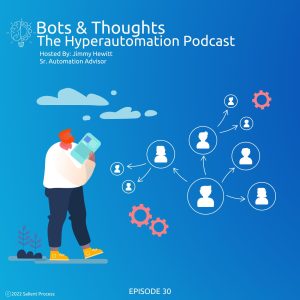
Follow along with the episode now!
 |
Joe’s Background: Manufacturing Roots: Joe’s expertise originates from the shop floor, immersed in Six Sigma activities within manufacturing. Holistic Approach: Beyond manufacturing, he extends continuous improvement practices to departments like HR and finance, showcasing a comprehensive approach. Educational Role: Joe teaches yellow belt, green belt, and black belt individuals, imparting lessons on holistic process improvement.
|
Throughout the discussion, Joe emphasizes the importance of lifelong learning. He encourages being open to new ideas and perspectives, acknowledging that even seasoned professionals can continue to learn and adapt. This mindset contributes to a culture of continuous improvement within an organization.
The discussion moves to challenges in processes, specifically addressing variation and optionality. Joe advocates for standard measures and processes where needed, cautioning against assumptions of standardization and emphasizing the significance of understanding and addressing process nuances.
Emphasizing the power of visualization, he discusses how process mapping platforms and process mining platforms have transformed the approach to continuous improvement, making end-to-end processes clearer.
Joe vision involves empowering a vast workforce of 160,000 problem solvers within Cargill. He believes in leveraging the collective intelligence of all employees to identify opportunities and solve problems, moving away from relying solely on a select group of trained professionals.
The Agile methodology and the concept of Minimum Viable Solutions (MVS) are discussed as practical approaches in continuous improvement. Joe encourages for test-driving solutions and adopting an MVS mindset to quickly gather feedback. This aligns with the idea of involving operators early on and learning from their insights.
The conversation expands beyond manufacturing floors, exploring continuous improvement in various departments such as HR, finance, and marketing. Joe mentions upcoming Kaizen sessions with HR, reflecting a holistic approach to improvement across different functions within the organization.
Joe provides a specific example of a Kaizen session focused on HR and onboarding processes. The goal is to become an “employer of choice” by improving processes from the interview stage through the first nine months. Mapping processes, understanding variations, and ensuring a positive employee experience are key components.
Technology, especially data-driven tools, plays a crucial role in decision-making. Joe discusses the use of data to facilitate meaningful conversations, performance dialogues, and identify areas for improvement. The emphasis is on leveraging information as lifeblood for continuous improvement efforts.
He discusses how people often have a limited view of their processes and emphasizes the value of mapping out end-to-end processes. Visualization tools help reveal the intricacies and dependencies. Joe shares insights into the transformative power of process mapping platforms, allowing teams to see beyond their immediate tasks. This visualization aids in understanding the entire workflow, uncovering inefficiencies, and fostering collaboration.
Referring to the past practice of “horror rooms” with process maps, he highlights how simple visual displays can lead to aha moments, revealing aspects of the process that were previously overlooked. Joe sees significant opportunities for process mining in transactional areas like IT, HR, and finance. The ability to visualize and analyze these processes helps identify variations, streamline workflows, and improve overall efficiency.
Challenges faced by a global organization, including diverse accounting systems and business units, are addressed. The conversation revolves around effective communication and collaboration across functional silos, aiming to address challenges beyond just operations and manufacturing.
While not explicitly stated, the conversation implies that future trends in continuous improvement involve a blend of traditional methodologies, technology adoption, and a people-centric approach. Joe’s insights suggest a dynamic and evolving landscape for continuous improvement practices.
Summarizing the discussion, the key takeaways include embracing lifelong learning, addressing process challenges, empowering a large workforce, adopting Agile and MVS approaches, expanding continuous improvement to various departments, leveraging data-driven decision-making, addressing global challenges, focusing on employee-centric onboarding, and anticipating future trends in continuous improvement.
Watch Episode 29 Now
If you have a topic idea, contact us today. We want our podcast to answer your questions, and if you have something that you want to hear, we would love to know. In addition, you can ask questions and get in touch with our Salient Process team.
At Salient Process, we understand the importance of comprehensive digital transformation. We work closely with each client and use a North Star methodology to align your procedures with overall business goals. Our expert team works hard to understand your unique needs, making a customized plan for success. With our Digital Business Automation solutions, you can move closer to your digital transformation goals.